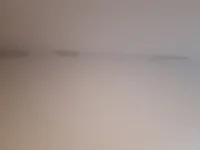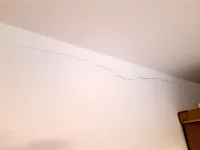A few months ago we had a ceiling replaced with new plasterboards and then skimmed.
However the walls weren't skimmed, they were left alone, and then painted.
The plasterer didn't mask off the edge of the ceiling, and when the ceiling was rendered I noticed plaster residue left along the top edge of the walls, which I thought didn't look very neat, but assumed they knew what they were doing.
Now we are getting a lot of cracks along the top of the walls.
The builders have returned a few times, but they just fill the cracks with filler, and the cracks keep coming back.
They say the problem is my old walls, that they are cracking. And they say the answer is to put fresh new plaster boards on top of them. It sounds expensive to me, and I dont think necessary.
The walls weren't cracking before this work was done.
I think the surplus render at the top of the walls cant stick to the walls, as the walls weren't primed. So it's cracking off, and they are slapping filler on it each time.
But I'm guessing. Am interested in what professional plasterers think, and what answer is
However the walls weren't skimmed, they were left alone, and then painted.
The plasterer didn't mask off the edge of the ceiling, and when the ceiling was rendered I noticed plaster residue left along the top edge of the walls, which I thought didn't look very neat, but assumed they knew what they were doing.
Now we are getting a lot of cracks along the top of the walls.
The builders have returned a few times, but they just fill the cracks with filler, and the cracks keep coming back.
They say the problem is my old walls, that they are cracking. And they say the answer is to put fresh new plaster boards on top of them. It sounds expensive to me, and I dont think necessary.
The walls weren't cracking before this work was done.
I think the surplus render at the top of the walls cant stick to the walls, as the walls weren't primed. So it's cracking off, and they are slapping filler on it each time.
But I'm guessing. Am interested in what professional plasterers think, and what answer is




